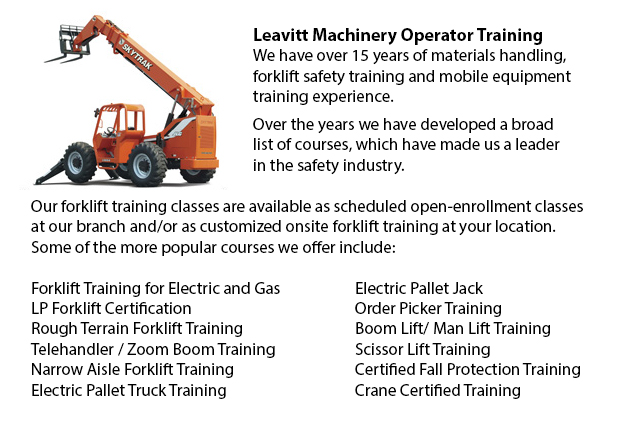
Telehandler License Scottsdale - A telehandler or telescopic handler is a machine that is normally used in agricultural and industrial applications. It has the same look to a lift truck and even works in a similar way, even if, the telehandler is more of a crane than a forklift. It has a telescopic boom which can extend forward and upward from the motor vehicle. The boom has the capability to fit one of several accessories like for instance pallet forks, a bucket, a lift table or muck grab.
Pallet forks are the most common attachment meant for the telehandler. This machine is commonly utilized for moving loads to and from areas that a standard lift truck would find inaccessible. Telehandlers are particularly useful for placing loads on rooftops for instance, or for removing palletized cargo from with a trailer. A lot of the tasks which a telehandler can carry out would otherwise require a crane and this machine can be expensive, not practical and not always time efficient.
Since the boom extends or raises while bearing a load, it likewise acts as a lever. Even with the counterweights in the back, this causes the equipment to become ever more unbalanced; hence, the advantage of the telehandler is truly its greatest limitation. As the working radius increases, the lifting capacity lessens. The working radius is defined as the distance between the center of the load and the front of the wheels.
Like for example, a telehandler with a 5000 lb capacity with the boom retracted could safely lift as little as 400 lb once it is completely extended at a low boom angle. The equivalent equipment that has a 5000 lb lift capacity and the boom retracted can support up to 10,000 lb with the boom raised to 70 degrees. The operator has a load chart to help determine whether a particular lifting job can be accomplished in an efficient and safe manner. This particular chart takes into consideration the height, the boom angle and the weight.
So as to monitor the telehandler, they come outfitted along with a computer which uses sensors. These sensors work to warn the operator, with some being able to cut controls to certain inputs if the limits of the vehicle are exceeded. Several telehandler kinds are also equipped with front outriggers that are known as mobile cranes. These greatly extend the lifting capacity of the equipment while it is stationary.
-
Crane Certification Scottsdale
Crane Certification Scottsdale - The Crane Certification Program consists of the industry suggested subject matter that would teach the efficient and safe operation of cranes. The person would train in the following: pre-operational, operational and... More -
Heavy Equipment Operator Training Scottsdale
Heavy Equipment Operator Training Scottsdale - Heavy equipment operator training facilities that provide good standards within the business, offering field performance tasks and additional equipment training are really sought after training features.... More -
Heavy Equipment Training School Scottsdale
Heavy Equipment Training School Scottsdale - HEO or the heavy equipment operator courses would provide you with the skills and knowledge required so as to enter the workforce as an entry level heavy equipment operator. In this twelve week course plus... More -
Crane Operator Classes Scottsdale
Crane Operator Classes Scottsdale - For the operators and the supervisors, current and new, the crane operator training course is suitable for all. Course content deals with applicable federal, provincial and state safety regulations. The training's... More -
Forklift Operator Certification Scottsdale
Forklift Operator Certification Scottsdale - Certification for forklifts are required to guarantee the safe operation of forklifts for those employers in warehouse, construction and industrial environments. The training needs to involve a method of e... More -
Crane Training Schools Scottsdale
Crane Training Schools Scottsdale - Our different programs for Mobile Crane Operation are meant for skilled operators who needs certification or re-certification, and for inexperienced people who are searching for their very first job as an operator... More -
Aerial Boom Lift Training Scottsdale
Aerial Boom Lift Training Scottsdale - Aerial Boom Lift Training is necessary for any individual who supervises, operates or works near boom lifts. This particular type of aerial lift or aerial work platform is utilized for lifting individuals, mater... More -
Telehandler Training Scottsdale
Telehandler Training Scottsdale - Telescopic handlers often known as telehandlers for short, are an extremely popular piece of heavy construction equipment. They are widely used in the construction and agricultural industries. These equipments have f... More

Forklift Training Scottsdale
TOLL FREE: 1-888-254-6157
Scottsdale, Arizona
forkliftcertificationscottsdale.com
Email Us
About Us


